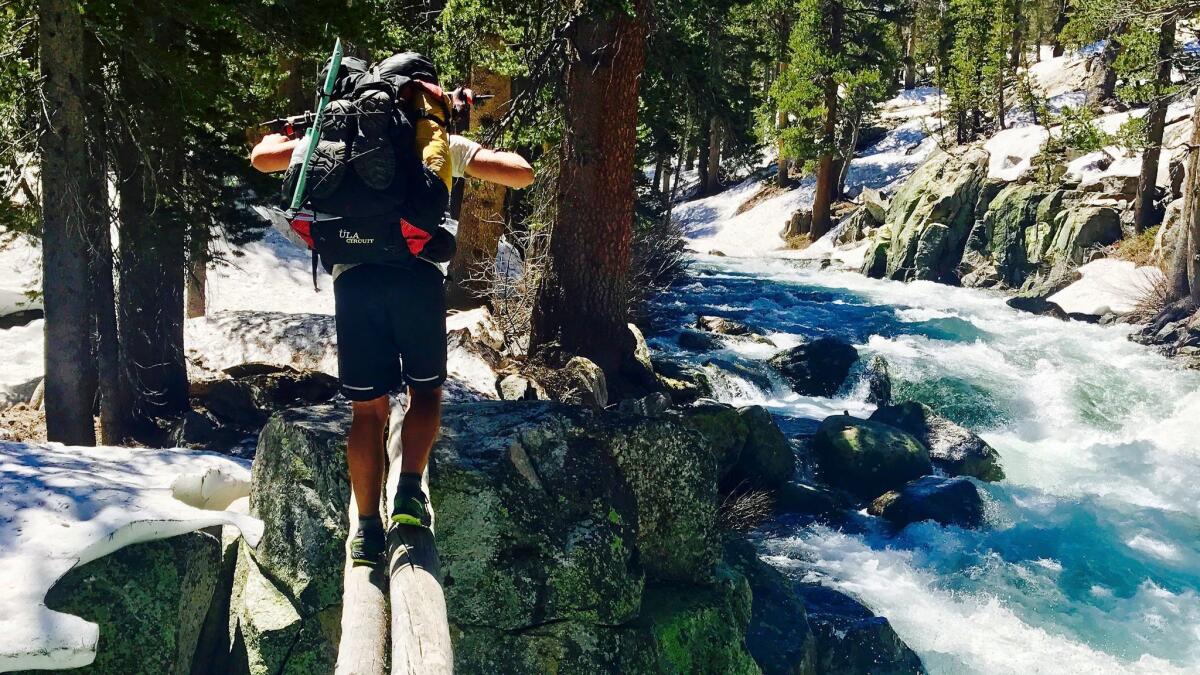Column: Deaths in rushing water can be prevented

- Share via
Midsummer is typically a time when we cope with issues related to hot, dry weather. This summer is no exception, with fire crews throughout Southern California battling to keep blazes in check.
But this summer is a bit unusual in that we are also seeing a problem that typically arises during the rainy season. Last winter was one of the wettest ever recorded, and as a result rivers and flood channels, fed by melting snowpack, are swollen with fast-moving water.
The danger this development poses should not be underestimated. Unfortunately, and sometimes tragically, it often is.
Several people have died in the Kern River this year, including an Orange County rapper, Michael Ramirez, aka Dossicc, who was swept away by powerful currents during a late-June camping trip.
It’s not just the Kern River. Up and down the state, waterways keep claiming victims. And what makes these deaths even more devastating is that they are entirely preventable.
Those of us who live in coastal Orange County have been educated to treat strong ocean currents with great reverence. But what many of us don’t realize is that any body of moving water carries risk, from a raging river like the Kern to innocuous-looking creeks where hazards often lurk beneath the surface.
People attempting to swim, or who accidentally fall into these waterways, can easily be overpowered by strong currents that aren’t always recognized by inexperienced eyes. Even the most skilled swimmers fight to stay afloat, a struggle that becomes even more difficult as they are pummeled by debris — items as large as sofas have been found in rivers and channels — or they become tangled in submerged vegetation.
“What happens is people get pulled underwater and pinned because of the force of the water pushing down against them,” said Capt. Larry Kurtz of the Orange County Fire Authority.
That force can be many times more powerful than ocean waves.
“They’re so surprised at the force of the water as they’re being swept downstream,” he said. “They’re like a piece of helpless driftwood.”
Water temperature is also a factor, Kurtz said, even during the hot summer months. River water is often cold, and hypothermia sets in after six minutes, slowing brain functions, weakening muscles and contributing to panic. It’s a deathly spiral that happens quickly and without mercy.
Although I have never known any swift-water victims personally, I can’t help feeling a particular sadness when such tragedies occur because I first wrote about the dangers of swift water 25 years ago. As a reporter, I participated in news coverage after the drowning of 15-year-old Adam Bischoff in the Los Angeles River.
Bischoff’s failed rescue and eventual death was captured by news crews, and as a result the incident received a great deal of attention at the time. Even today memories of the horrified expression on the teenager’s face, caught in photographs moments before he succumbed, still haunt me.
In the aftermath of Bischoff’s death, fire agencies throughout the state dedicated themselves to improving their swift-water rescue operations, which are notoriously difficult in part because the victim is a moving target. Now most agencies have highly skilled professionals and specialized equipment devoted to these rescues, and they conduct ongoing public education campaigns to warn people of the dangers.
In the 1990s, I also wrote some stories about a woman whose fiance had jumped into the Los Angeles River to try to save a boy who had fallen in. The boy survived, but his rescuer died. The victim’s fiancee dedicated herself to promoting swift-water safety, and produced an award-winning documentary on the subject, which proved highly influential in efforts to raise awareness and provide more resources and training for rescue teams.
But all those efforts haven’t been enough, because here we are in 2017, and people are still dying.
Often tragedies spring from a series of small mistakes, Kurtz said. People stand too close to rushing water and fall in, or they inch closer and closer until they slip on the eroding shoreline. Sometimes they ignore barriers that have been erected to keep swimmers away or fail to heed posted warning signs. Some victims have leapt in to try to save others.
The first mistake is always the biggest: A lack of respect for — and understanding of — the sheer, unrelenting power of moving water.
Parents, you have an important role to play. You wouldn’t let your child go to the beach without educating them about the dangers of ocean currents. You wouldn’t even let them out the door without sunscreen.
Make sure you’re kids also know that any body of moving water is not to be underestimated. Talk to them about it now. Show them the news stories and explain to them that last winter’s rain and snow, while a very welcome development for our previously parched state, has also led to more dangerous conditions at rivers and flood channels.
They must also be made aware that the last thing they should do is jump in to try to save another, or else they too will require rescuing. Always call 911, and let the professionals do their jobs.
As Kurtz said, “We at the Orange County Fire Authority, and I believe I can speak for all fire agencies, we don’t want your business.”
PATRICE APODACA is a former Newport-Mesa public school parent and former Los Angeles Times staff writer. She lives in Newport Beach.
All the latest on Orange County from Orange County.
Get our free TimesOC newsletter.
You may occasionally receive promotional content from the Daily Pilot.




